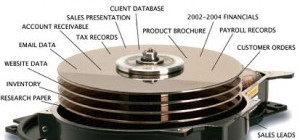 You must secure data transfer across your company’s network as a business owner. This data can be compromised without proper protection and compromise your company’s operations. A recent Accenture report found that 43% of all cyberattacks target small-to-medium-sized businesses (SMBs). Furthermore, only 14% of SMBs have implemented the best cybersecurity practices.
You must secure data transfer across your company’s network as a business owner. This data can be compromised without proper protection and compromise your company’s operations. A recent Accenture report found that 43% of all cyberattacks target small-to-medium-sized businesses (SMBs). Furthermore, only 14% of SMBs have implemented the best cybersecurity practices.
A con artist may use a counterfeit website that superficially resembles the actual website. Visitors to the site may enter their personal information, including social security numbers, account numbers, login IDs, and passwords, thinking they are communicating with a legitimate company. The con artists then use the data to steal the money, identities, or both of the site users or sell the information to other criminal organizations. This is why companies need reliable cybersecurity, likeWeTransfer security, to avoid scammers infiltrating the company’s program. These five recommendations for secure data transfer can help you avoid this:
Tools
If you need to transfer sensitive business data from one location to another, using tools to secure data transfer is vital. These tools protect your data from malware, unauthorized access, and other threats. Fortunately, there are a variety of options to choose from. In this article, we’ll look at a few popular options.
Choosing the right secure file transfer system is crucial for your business’s efficiency, security, and compliance. A good solution should support the latest security protocols and algorithms and provide single audit trails. In addition, a robust, secure file transfer solution can flag any exceptions to routine tasks. Take, for instance, We Transfer security.Is WeTransfer Safe?Yes. It offers several fantastic security features. Additionally, you can password-protect your files with WeTransfer Pro. However, there are still a lot of security features that companies or you alone must take advantage of to have a safe data transfer.
Permission-Based User Roles
Permission-based user roles provide administrators with a secure and effective way to control access. For example, some users may only need access to specific documents or folders. In addition, permission-based management allows you to designate varying access levels for each user so sensitive data doesn’t fall into the wrong hands. This is especially useful in larger organizations.
The first step in implementing role-based access control is assigning roles to different users. The functions distinguish other users within the business, and they usually match job titles. You can name the parts according to job descriptions or elaborate on a department. The next step is establishing a clear separation between primary and privileged users.
Permission-Based user roles can control data flow between departments or across different sites. Permission-Based user roles can also be used to define who can access what. For example, you can specify an admin for a specific part of the organization or grant permission based on location.
Two-factor Authentication
While two-factor authentication ensures that online accounts are secure, it is not foolproof. This authentication method requires that a user signs in using two different factors, including a physical device and sign-in time. As a result, several software solutions and payment processors are incorporating additional elements to ensure the most secure data transfer for your business.
Depending on your needs, two-factor authentication may be a good fit for you. Typically, 2FA involves a combination of a password and a second factor (usually a text code or biometrics such as a fingerprint or retina). This security measure can protect your business’s data and prevent hackers from compromising its network.
Monitoring Data Transfers From Beginning to End
Monitoring data transfers from beginning to end is a vital part of data processing for companies. In addition to ensuring compliance with government regulations and meeting service level agreements (SLAs), it can help your business improve security and audibility and manage increasing volumes of data. Furthermore, you can make better decisions about how your data is handled by monitoring data transfers.
By monitoring data transfers from beginning to end, you can avoid data loss, which is usually the result of employees mishandling sensitive data. In addition, monitoring tools can identify unauthorized access and file leaks. Furthermore, these tools can prevent data breaches and leaks with data encryption.
Techniques
When safeguarding data transfer for your company, there are numerous things to consider. These factors include the type and volume of data transferred and the systems involved. A comprehensive data management strategy will help ensure that data is transferred securely while causing minimum disruption to business operations. It’s also important to consider communication and security measures. Finally, a backup plan is always recommended to avoid losing or compromising essential data.
Encryption and monitoring tools can help protect data during transfer. These tools can detect unauthorized access and prevent data leaks. While dataencryptionis one of the most effective ways to protect data, monitoring tools can detect unauthorized access and protect data while in transit.







